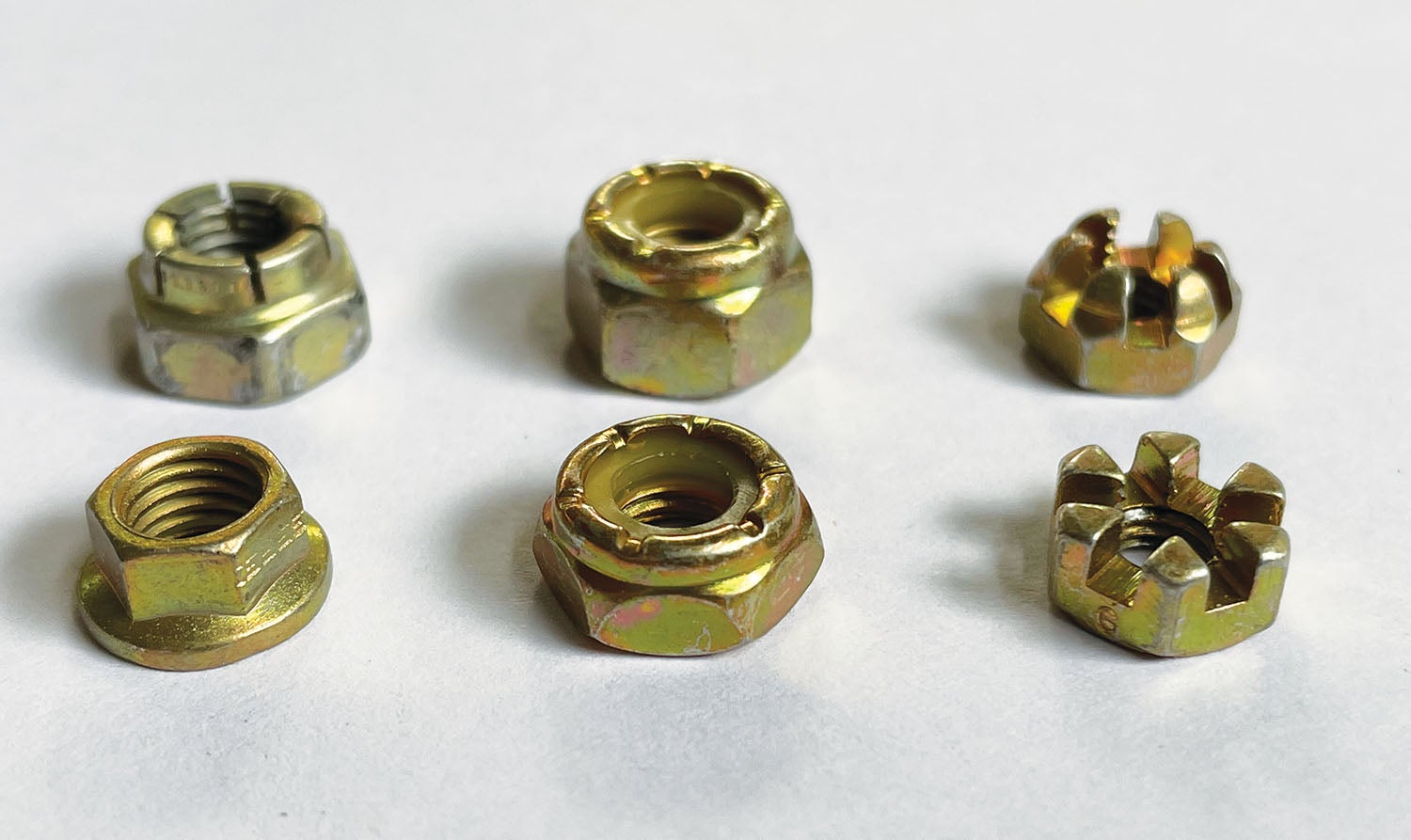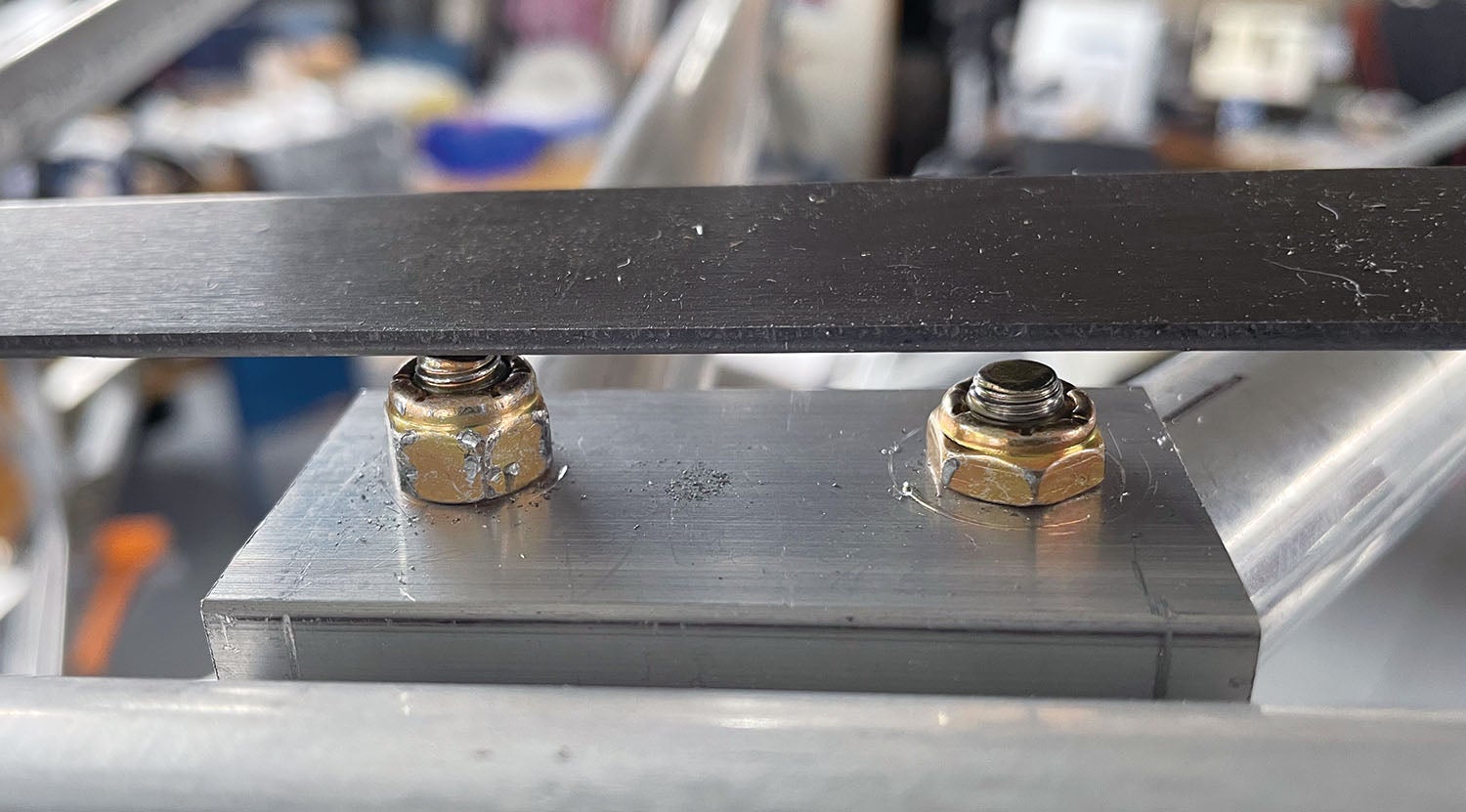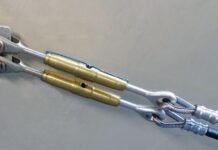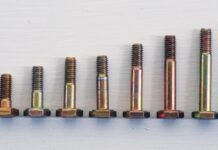
The aircraft bolts we use to build our projects will always be paired with an appropriate nut to complete the mission of holding components securely together. There seem to be three nut categories that are repeatedly used in aircraft kits. The three categories I observe are elastic stop nut, castellated nut and metal stop nut. Note that all are designed to not loosen from their position after they have been secured.
The elastic stop nut is self-locking and has a colorful nylon insert that grips the bolt and resists rotation. This is possibly the most widely used nut in the AN family of aircraft hardware for our kits. It has a part designation of AN365 and comes in myriad sizes to match any bolt diameter. It is designed to be strong enough to match the tensile strength of the AN bolt it attaches to.
The castellated nut is visually recognized by its medieval castle shaped appearance with a bunch of slots at the top. Its popular part designation is AN310. This all-metal nut should only be used with bolts that have a hole drilled through the threaded end so that a cotter pin can secure the nut from rotating. Castellated nuts are also designed to be strong enough to match the tensile strength of the AN bolt they are attached to.

Then there is the all-metal stop nut, the AN363. Instead of using a nylon insert to stop rotation, its threads are slightly deformed to create resistance to movement. This nut is chosen for applications where intense heat may be found, as in the engine compartment. The nylon used in an elastic stop nut will fail with high heat. The AN363 is also designed to be strong enough to match the tensile strength of the AN bolt it is attached to.
Each of these three nut styles has a “companion” nut that comes in a reduced-size, low-profile version. These nuts are referred to as thin, half-height or even shear nuts. The photos provide a side-by-side comparison to the full-size versions. Because of their reduced dimension, they are widely used in limited-space applications. This might be because there is an adjacent component that would interfere with installing a full-size nut. Or, there could be no physical room for a full-size nut. In the photo showing two nuts side by side, one is a standard elastic nut (AN365) and the other is its low-profile cousin (AN364). The bar crossing the nuts represents where a top cover fabric needs to be installed near the trailing edge of a wing. Clearly, a bump will result if the full-size nut is used. However, the low-profile version provides plenty of space between the fabric and bolt tip.
If smaller is better, what are the drawbacks to using these thin nuts? Because there are fewer threads gripping the bolt, the tensile strength for a bolt-nut fastener is reduced from that when using a full-size nut. The bolt retains its full shear rating capabilities, however. This is why these nuts are sometimes called shear nuts—they relinquish about half of the original tensile strength of a full-size version. Another way to say this is that these thin nuts are for use in structural applications where the bolt is loaded primarily in shear—or any application where the tensile strength of the regular size nut is not needed.
So clearly, we need to understand how a fastener is being loaded before substituting a full-size nut with a thin nut. It is nice to have such an easy solution when confronted with a clearance problem. In the case of my wing covering, these small nuts made it possible to eliminate high spots that otherwise would have remained visible. Often, a shorter bolt can be used with these nuts. You may go a long time without a need for these special nuts—but when the situation arises, it is a simple, inexpensive fix. Plane and simple.














I believe MS21042 nuts are full strength, not shear nuts.
MS2104 are pretty weak in tension, so I would suggest using them judiciously. We tested the -6 size along with several other AN/MS/NAS nut types to evaluate the various kind of nuts being used with RV-8 landing gear attachment. Our results were:
MS21042-6 11,600 lb
NAS679A6 12,500 lb
MS21045-6 15,800 lb
NAS1804-6 16,200 lb
http://www.hpaircraft.net/rv8/nut_test2b.jpg
See the whole VAF thread at: https://vansairforce.net/community/showthread.php?t=42630
Jim,
Thanks for pointing out an error in this article as the MS21042 nuts are full strength, not shear. It is a wonderful thing to have these short nutss provide full strength. The lesson for me is to not assume that size dictates an expectation of strength – as is the usual case.
Interesting series of tests as pointed out by Bob K. Good reading there.
Jon
Another thing to think about here is the difference in the torque values for tension and shear nuts. When you look at any aircraft hardware torque table it has two columns for tension and shear. It is the type of nut you are using that determines the torque to use. Too often people misunderstand these torque tables and think that it is dependent on how the bolt and nut are being used (shear or tension applications). That is not true. The torque simply depends on the type of nut; the shear nut gets a lower torque because there are less threads.
When I was an Army aircraft mechanic I seem to remember a rule requiring that three threads as a minimum be showing above the nut. Do the FAA regulations require that or is it just a good practice?